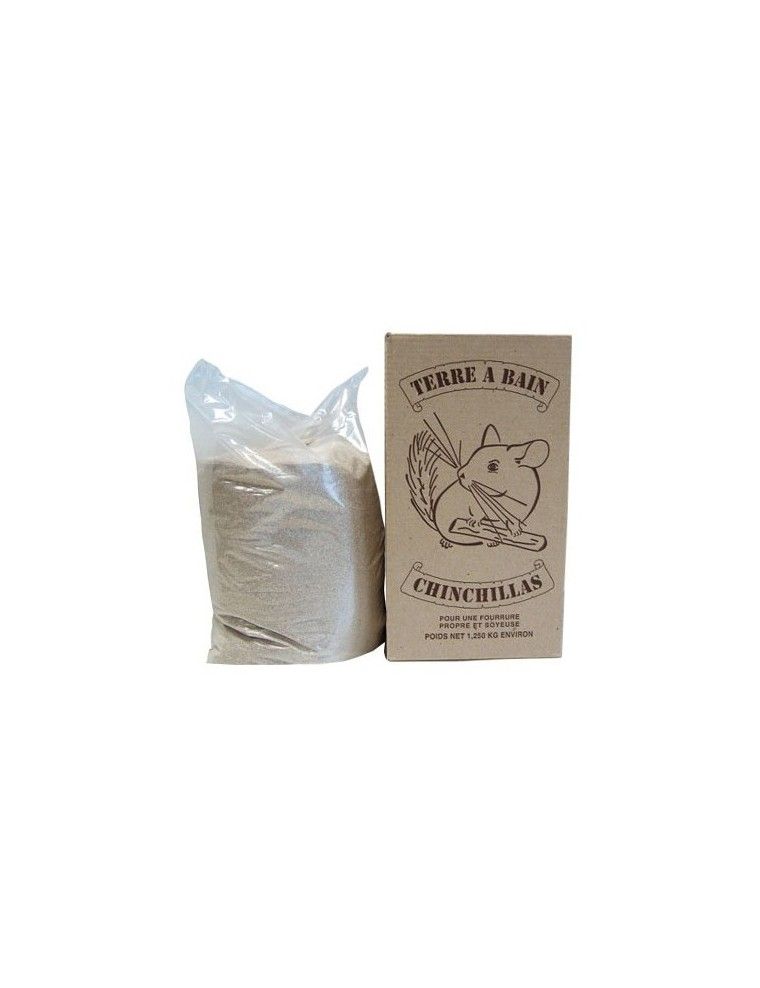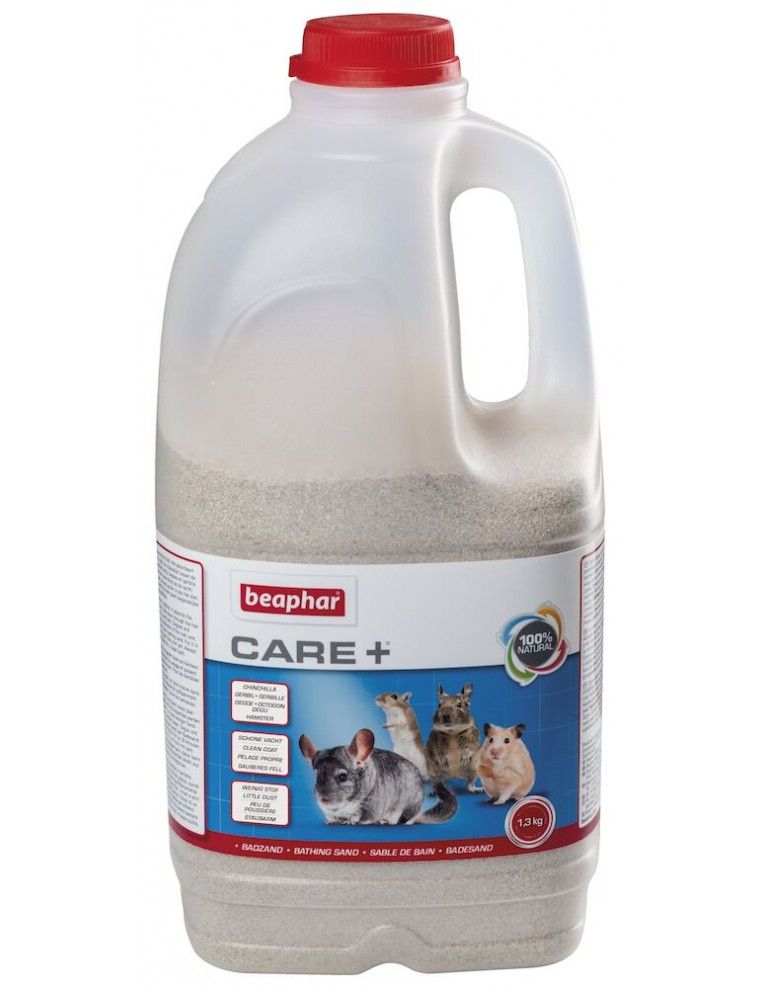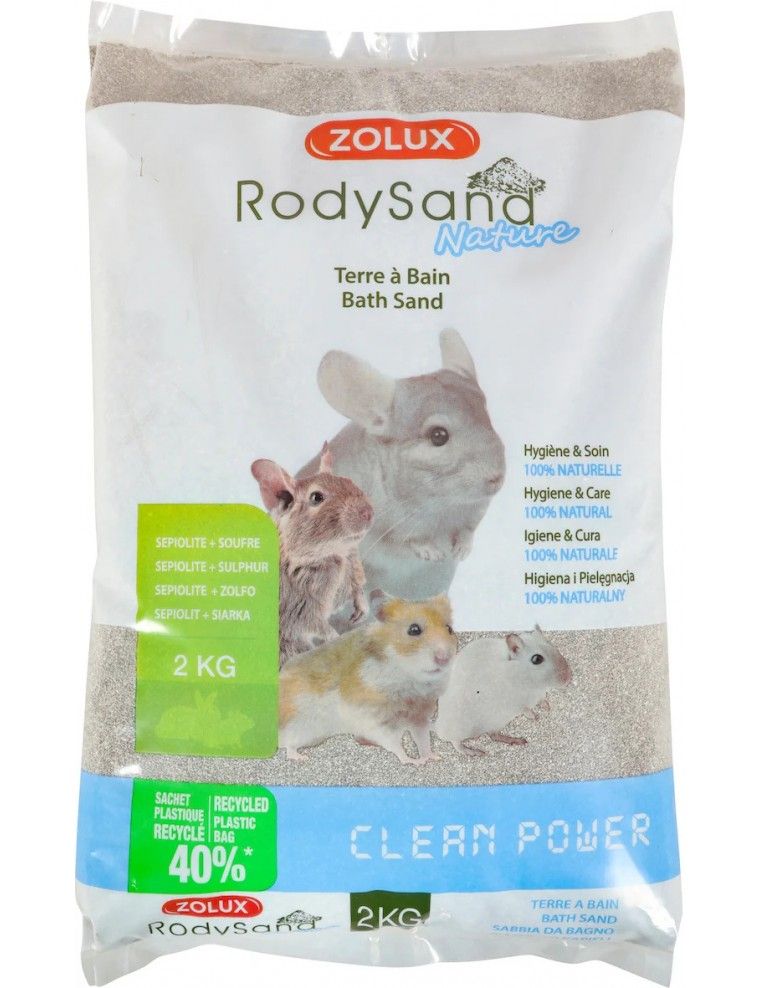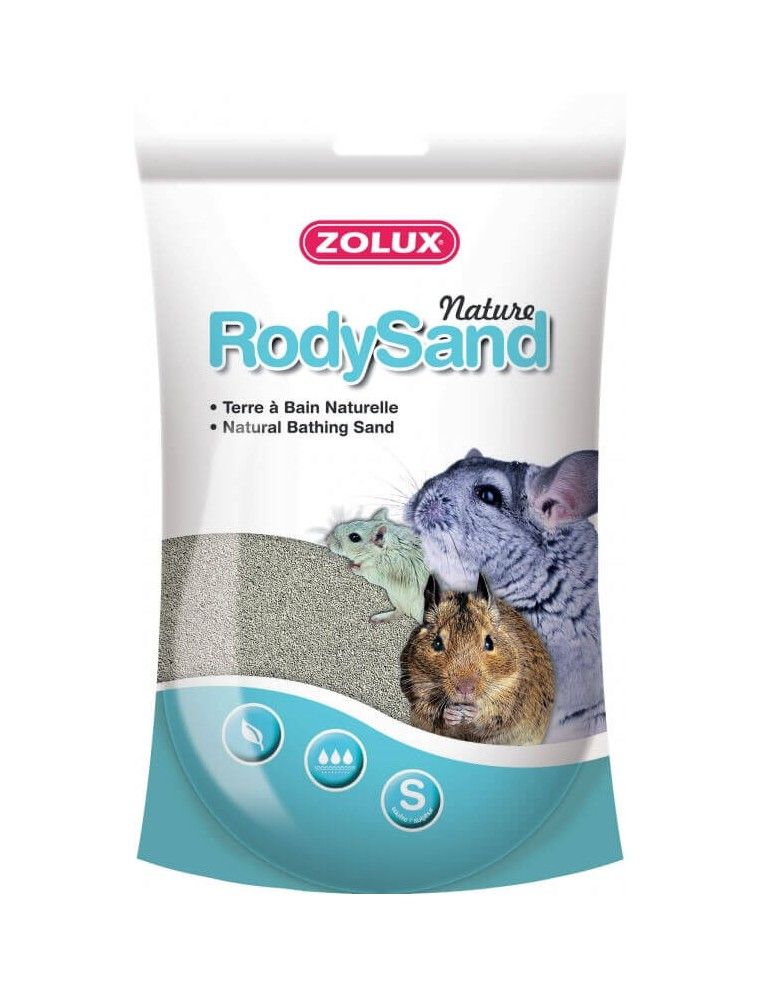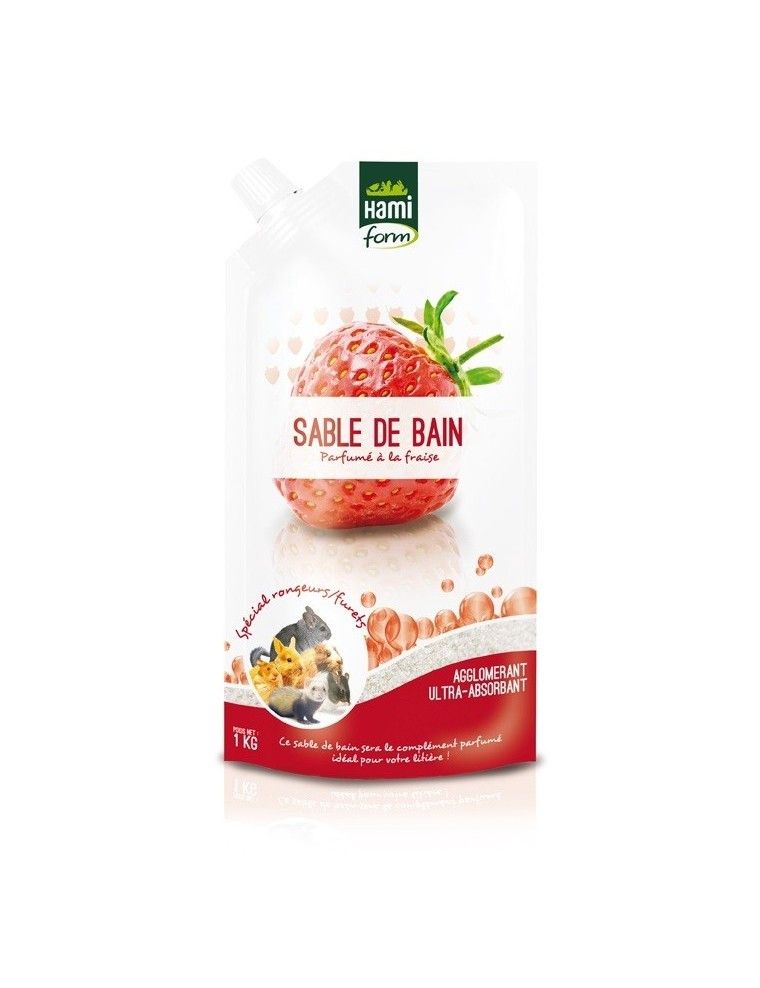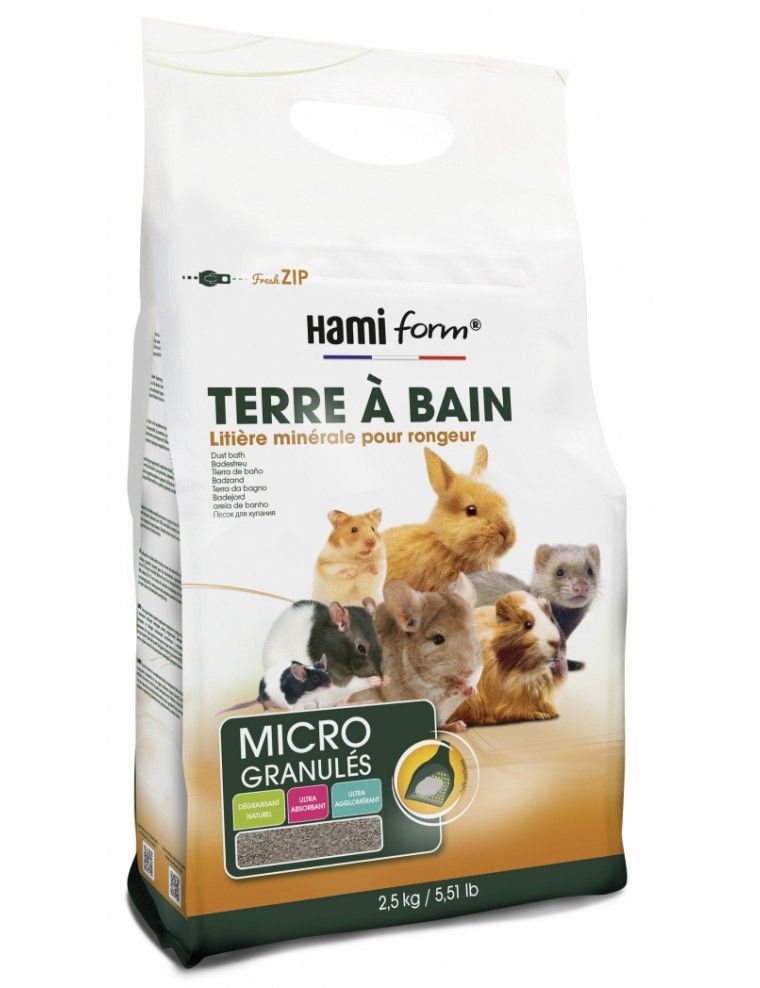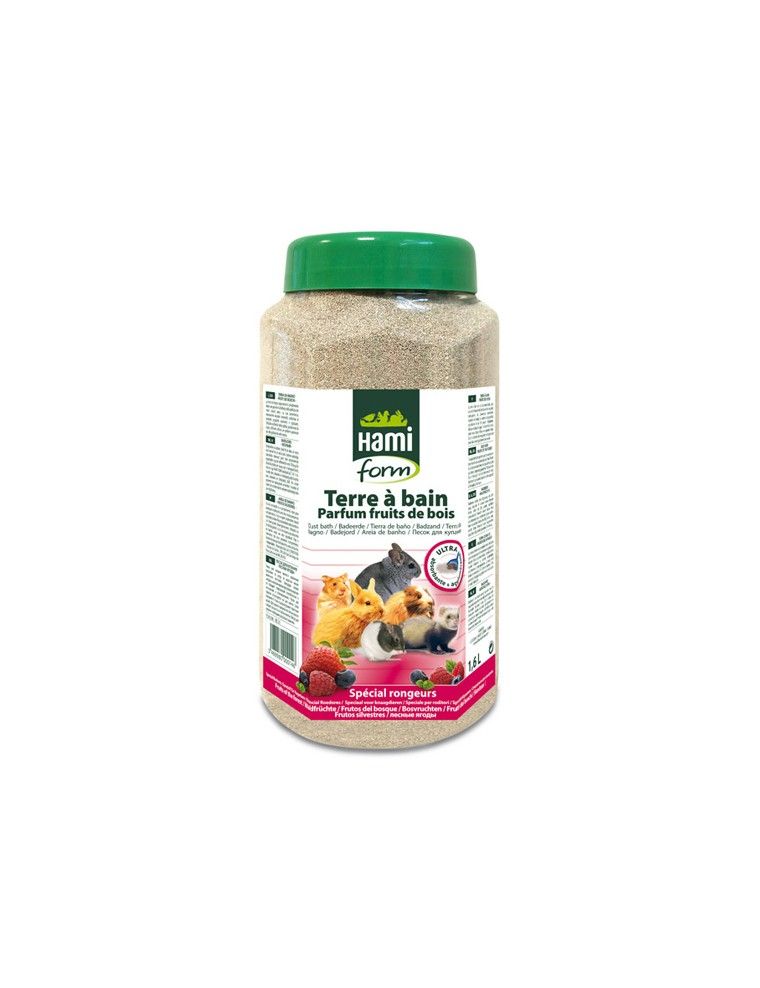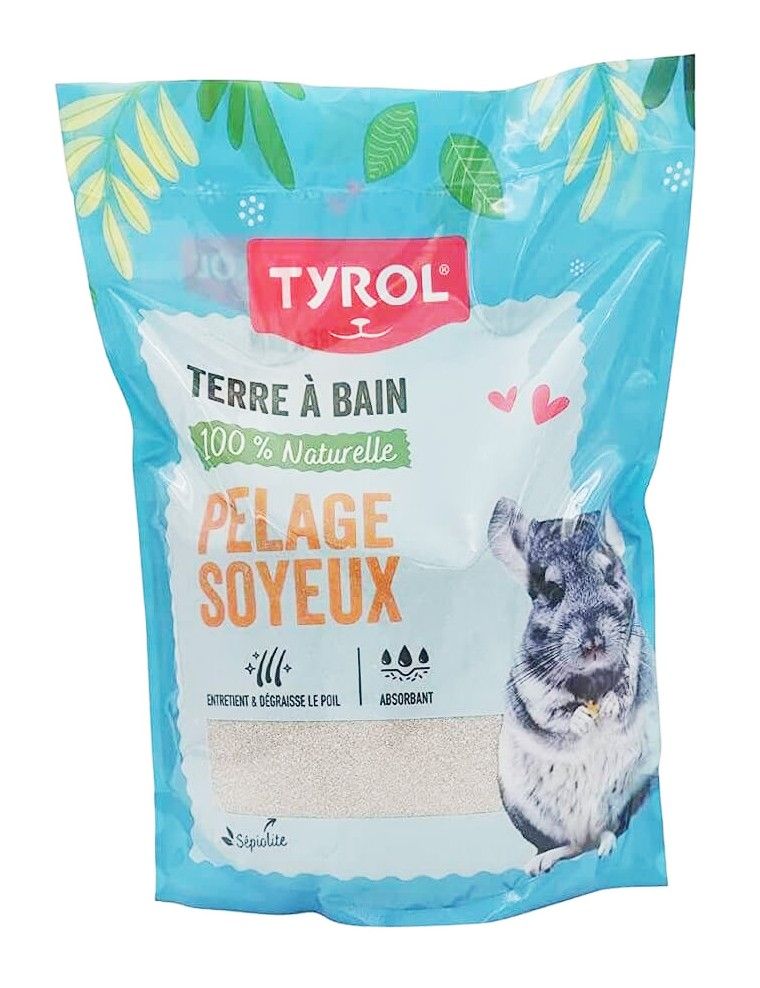- 4 in stock
Earth in Bath Octodon
The Sand Bath: A Moment of Pleasure and Treatment
For a degu, sand bathing is not only a moment of relaxation, but an essential practice for maintaining the cleanliness and health of its coat. At Le Petit Rongeur, we understand the importance of this ritual and offer a selection of high-quality bathing soil, adapted to the specific needs of these small animals. Our products, from trusted brands like Beaphar , Chinchillas du Terroin , and Hamiform , provide effective cleaning thanks to their abrasive and degreasing properties, while being gentle on your companion's skin.
Choice of Earth to Bath: Safety and Effectiveness
The quality of chinchilla sand is crucial to avoid any irritation or injury. Our bath soils are specially selected for their softness, without sharp crystals, thus guaranteeing safe and pleasant grooming for your degu. Whether for a daily sand bath or for moments of play and digging, our range offers the ideal texture and composition to meet both needs, while contributing to the protective and insulating function of your pet's coat.
Integration of the Sandbox into the Octodon Habitat
A well-placed sandbox enriches your degu's habitat, giving it a dedicated space for grooming and playing. Using a specific tray for bathing soil helps maintain the hygiene of the cage, confining the sand to a controlled space and making cleaning easier. At Le Petit Rongeur, we advise you on the best practices for integrating this bin into your degu's environment, thus ensuring both the cleanliness of its living space and its well-being.
A Key Element for the Well-being of the Octodon
Bath clay is not just a simple hygiene product; it plays a vital role in your degu's daily life, positively influencing their physical and mental well-being. By offering your pet the opportunity to bathe in quality sand, you allow it to maintain a clean and healthy coat, while providing it with a fun and natural activity. Discover our selection and choose the bathing soil that will delight your degu.
Earth in Bath
The Sand Bath: A Moment of Pleasure and Treatment
For a degu, sand bathing is not only a moment of relaxation, but an essential practice for maintaining the cleanliness and health of its coat. At Le Petit Rongeur, we understand the importance of this ritual and offer a selection of high-quality bathing soil, adapted to the specific needs of these small animals. Our products, from trusted brands like Beaphar , Chinchillas du Terroin , and Hamiform , provide effective cleaning thanks to their abrasive and degreasing properties, while being gentle on your companion's skin.
Choice of Earth to Bath: Safety and Effectiveness
The quality of chinchilla sand is crucial to avoid any irritation or injury. Our bath soils are specially selected for their softness, without sharp crystals, thus guaranteeing safe and pleasant grooming for your degu. Whether for a daily sand bath or for moments of play and digging, our range offers the ideal texture and composition to meet both needs, while contributing to the protective and insulating function of your pet's coat.
Integration of the Sandbox into the Octodon Habitat
A well-placed sandbox enriches your degu's habitat, giving it a dedicated space for grooming and playing. Using a specific tray for bathing soil helps maintain the hygiene of the cage, confining the sand to a controlled space and making cleaning easier. At Le Petit Rongeur, we advise you on the best practices for integrating this bin into your degu's environment, thus ensuring both the cleanliness of its living space and its well-being.
A Key Element for the Well-being of the Octodon
Bath clay is not just a simple hygiene product; it plays a vital role in your degu's daily life, positively influencing their physical and mental well-being. By offering your pet the opportunity to bathe in quality sand, you allow it to maintain a clean and healthy coat, while providing it with a fun and natural activity. Discover our selection and choose the bathing soil that will delight your degu.
- in replenishment
- in replenishment
- 4 in stock
- 4 in stock
- in replenishment
- 4 in stock
- in replenishment
Questions / Réponses
Quand il s'agit de choyer votre Octodon avec un bain de terre, la qualité est primordiale. La terre à bain idéale ? Celle à base de terre de diatomée, non calcinée, qui est ultra-absorbante et douce pour leur pelage. C'est un choix top car elle capture les excès de sébum sans agresser la peau de votre petit compagnon. Veillez juste à ce qu'elle soit sans additifs ni parfums, pour garder les choses aussi naturelles que possible. Un bain dans cette terre et votre Octodon ressortira propre, sec et heureux, prêt pour de nouvelles aventures !
Comme pour nous, la routine de soin de votre Octodon doit être régulière mais pas excessive. Proposez-lui un bain de terre 2 à 3 fois par semaine pour maintenir son pelage en parfait état. Trop de bains pourraient assécher sa peau, tandis qu'une fréquence insuffisante ne le débarrasserait pas efficacement des huiles et saletés. Trouvez le juste milieu pour que votre ami à fourrure garde un pelage propre, sain et soyeux.
Introduire de nouvelles expériences à votre Octodon peut être un moment de découverte joyeuse. Pour la terre à bain, commencez par le placer doucement dans un récipient peu profond rempli de terre, afin qu'il puisse en sortir facilement s'il se sent anxieux. Montrez-lui comment se rouler dans la terre en utilisant doucement vos mains pour y déposer un peu de terre sur son dos. La curiosité naturelle de votre Octodon prendra le dessus, et bientôt, il se délectera de ses bains de terre comme un pro.
Bien que réutiliser la terre à bain puisse sembler économique, pour la santé de votre Octodon, il est conseillé de la changer après chaque utilisation ou au moins de la tamiser pour enlever les débris et les excréments. Si vous optez pour une réutilisation courte (une ou deux fois avec tamisage), assurez-vous que la terre reste sèche et propre. Cependant, pour garantir une hygiène optimale, le remplacement régulier reste la meilleure option.
Pas besoin de transformer le bain de votre Octodon en une plage personnelle. Une couche de terre d'environ 5 à 10 cm de profondeur dans un bac adapté est parfaite. Cela lui permet de se rouler et de s'enfouir sans difficulté, tout en gardant la terre à l'intérieur du bac lors de ses escapades. L'important est de lui offrir suffisamment de terre pour qu'il puisse s'y baigner complètement, mais sans gaspillage.
L'emplacement du bac de terre à bain dans la cage de votre Octodon peut grandement influencer son utilisation. Choisissez un coin calme et éloigné des zones de nourriture et d'eau pour éviter la contamination. La tranquillité encouragera votre Octodon à utiliser le bac pour ses bains sans stress. Assurez-vous également que le bac est facilement accessible, mais pas dans un lieu de passage constant, pour permettre à votre Octodon de se baigner en paix.
La curiosité gustative de votre Octodon peut l'amener à goûter à tout, y compris sa terre à bain. Heureusement, si vous utilisez une terre spécifiquement conçue pour les bains d'animaux, sans produits chimiques ni additifs, ingérer de petites quantités ne devrait pas poser de problème. Toutefois, surveillez son comportement pour éviter que cela ne devienne une habitude, car une consommation excessive pourrait perturber son système digestif.
Un œil attentif et un nez fin sont vos meilleurs alliés pour déterminer le bon moment pour changer la terre à bain. Si vous remarquez une odeur désagréable, une humidité excessive, ou des débris visibles, il est temps de la remplacer. Une bonne règle générale est de la changer complètement au moins une fois par semaine, tout en effectuant des tamisages légers après chaque utilisation si vous réutilisez la terre à court terme.
